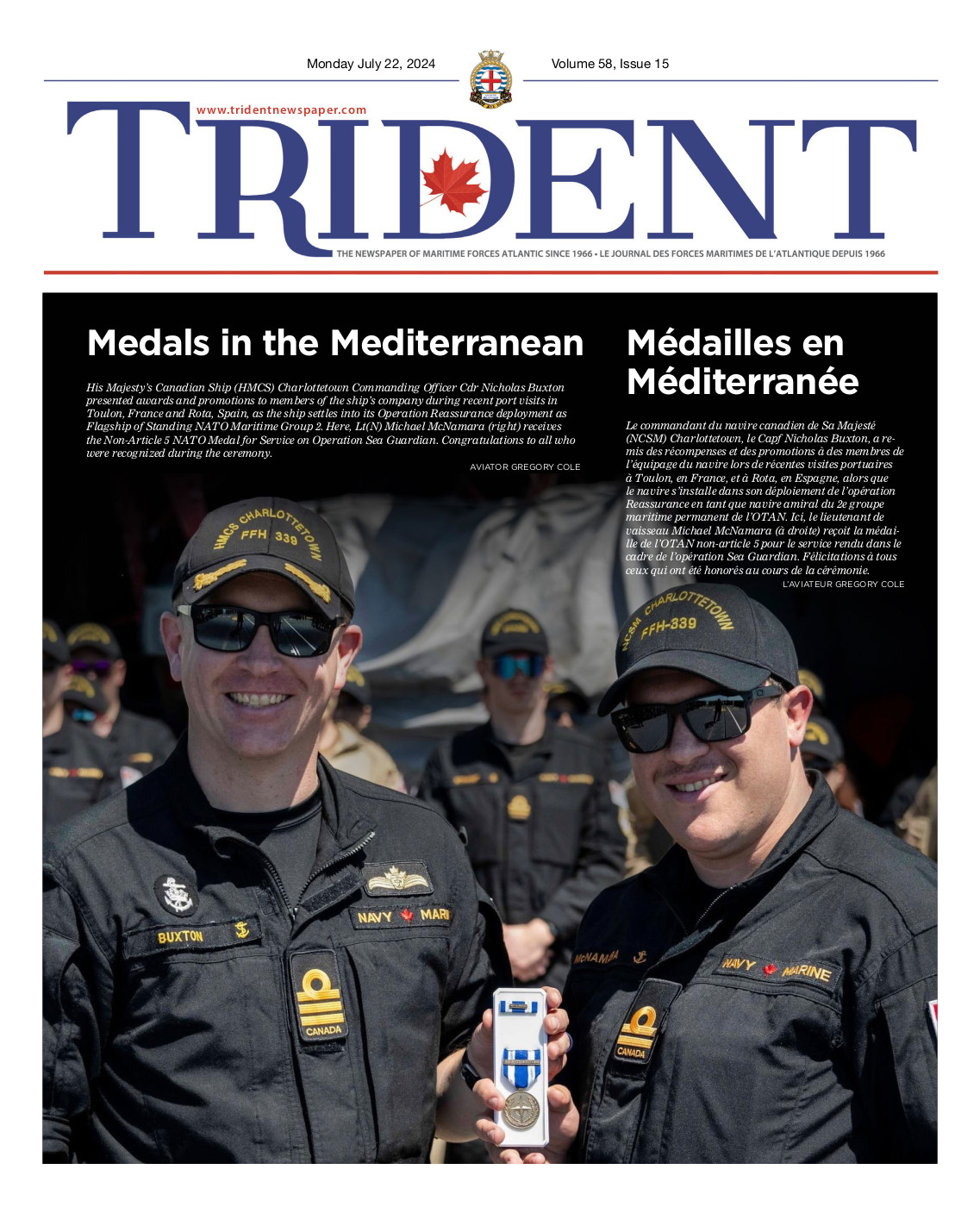
Photo: FDU(P)
New light weight diving gear increases capabilities for clearance divers
By Peter Mallett,
The Lookout Staff
A new, light-weight surface-supplied diving system will increase operational diving capability during deployments and exercises for Fleet Diving Unit (Pacific) Clearance Divers.
The Ultra Lightweight Surface Supply Diving System, manufactured by Swedish-based respirator manufacturer Interspiro, is also being acquired by FDU (Atlantic), the Canadian Army divers, and SARTECH divers.
The new lighter and modern equipment supplies breathing gas and vital two-way communication between the surface and diver conducting dives to a maximum of 54 meters (175 feet).
Divers, including the Unit’s Commanding Officer LCdr Rick Kappel, trialled the system last month in Esquimalt Harbour at Fleet Diving Unit Pacific.
LCdr Kappel noted that, among other operational advantages, this ultra-lightweight diving system will make diving from small boats in an operational environment safer and more effective.
“Another significant advantage of having this lighter and modern equipment is what takes place above the water while divers are diving,” he said. “Clearance Divers often do their jobs in cold and hostile conditions, with boats rocking back and forth. This streamlined equipment will make these dives easer from a setup perspective, safer from a diver support perspective, and will also help save backs while moving the tanks and gear in and out of boats and vehicles. We are often prone to back injuries when going back and forth from land to water because we are carrying bulky, heavy, sometimes awkward gear while keeping balance all at the same time.”
LCdr Kappel and nine other divers participated in this two-of-four three-day training course designed to qualify all FDU(P) divers on the new equipment. He conducted the diving system safety test and dawned the gear, and entered the cold waters of Esquimalt Harbour, diving to a depth of about 10 metres for this initial training dive. He will carry on with deeper, longer dives later this month. His progress was monitored by personnel on the jetty through the system’s two-way communications system as he descended below the surface.
With a large bubble of air preceding his ascent, LCdr Kappel breached the surface and gave the thumbs-up sign completing this short and shallow proficiency training dive.
The Ultra Lightweight Surface Supply Diving System includes lightweight carbon fiber reserve and regulator tanks, and a more portable surface supply system with modernized regulators, underwater gauges, and communications panels built into lightweight face masks that can be monitored by the diver.
It also includes a much smaller umbilical cord, the long yellow hose that supplies divers with an unlimited supply of high pressure breathing gas, along with enhanced communication and sensory capability.
PO1 Robert Majore, who, along with PO1 Giles Pease, is overseeing the education and training required to qualify divers on this new gear, says the older system was much heavier and more cumbersome to operate. An older regulator tank weighs about 60 lbs compared to the ultralight system’s 40 lbs.
The older system also requires a larger umbilical cord that sends low pressure air (instead of high pressure air) down to the divers resulting in greater drag on the line from underwater tides and currents.
Another advantage of the new system, says PO1 Majore, is that it offers enhanced portability and folds up easily into pelican cases that can easily be loaded onto and off boats, trucks and other vehicles worldwide.
FDU(P) plans to deploy the Ultra Lightweight Surface Supply Diving System for the Humanitarian Assistance and Disaster Relief (HADR) portion of RIMPAC 2018 Exercise to be conducted this summer in Hawaii.





